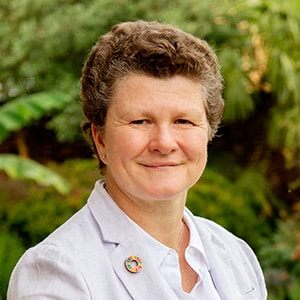
The S in ESG - Environmental, Social and Governance - is every bit as important as the E and it is of course inextricably linked to it. Quantifying success when it comes to acting upon it, and even defining what it actually means are, however, still proving challenging. It’s this lack of clarity that has too often rendered it the poor relation to the E and the G and seen it falling down the agenda in boardrooms.
The business world has, however, an obligation to support social progress - treating employees fairly, driving equality, acting as responsible corporate citizens - but what is less clearly understood is how this also drives business performance. It is so much harder - even impossible - to do business in a community, a country or a world that lacks social justice and cohesion.
What is needed in relation to social performance is the same remorseless logic as when it comes to judging financial or environmental performance. A failure in any one of these three areas will, after all, always result in victims.
All around the world, businesses are having to face up to all of their sustainability responsibilities. The Securities and Exchange Board of India has in the current financial year made ESG reporting mandatory for the country’s top 1,000 listed companies. In Europe, the Corporate Sustainability Reporting Directive that will be finalised towards the end of June will set out European Sustainability Reporting Standards that will be applied to around 40,000 companies in Europe. There are many more examples globally.
Along with a great many other organisations and businesses, PwC contributed its thoughts to The World Business Council for Sustainable Development’s (WBCSD) recent primer intended specifically for CFOs explaining what the S is and how best they can ensure they are factoring it into their business strategy and operations. CFOs are increasingly finding themselves at the heart of communicating corporate social performance, engaging with investors, regulators and standard-setters in guiding and implementing how the “S” is measured and evaluated and used internally and externally to inform stakeholder decisions.
Often it falls to them to reconcile a business’s financial objectives with its obligations to the planet and people - explaining to boards that short-term gain can often come at profound long-term cost to wider society.
The S encompasses: a business’s own workforce; workers along its value chain, both upstream and downstream; the communities it affects (locally or along the value chain); and the people who use a company’s products and services.
To all of these groups, business owes a duty of care. The WBCSD report makes the point that CFOs, and their companies, are expected to act with due diligence to anticipate and address risks to them all. There is an expectation that companies should attend to all actual and potential impacts, provide remedy when they cause or contribute to actual harm, and communicate on progress and setbacks as they do so.
The challenge is inevitably for investors and other stakeholders to find ways to accurately gauge how a company is performing in terms of its societal obligations. According to the WBCSD report, as things stand, 70% of the indicators used in “S” analysis focus on whether a company has certain policies and processes in place, but it’s hard to ascertain whether high scores are a result of deep strategic commitment to addressing impacts on people, or communications efforts with limited meaningful action to back them up. Or it may just be that the company is based in a country where policies are legally required.
A widely used “S” indicator is, for instance, the proportion of suppliers or operations for which the risk of forced labour or child labour incidents are high, but a reduction in numbers from previous years could mean a company has simply divested an operation in a high-risk context or is investing fewer resources in risk identification.
It’s for individuals at every level of every business - from the top down - to take the necessary steps to embed policy commitments in their corporate culture and day-to-day practices. Board members in particular need to assure themselves that senior leaders across their organisation are empowering all employees to speak up about potential risks to people across operations and value chains.
Key issues include identifying conflict between commercial targets, on the one hand, and people’s rights and the best interests of the planet on the other, and the degree to which internal audit teams are trained to evaluate controls for addressing these risks. All stakeholders in these processes need to be willing all the time to learn and to be prepared to continually improve, fine tune and adapt them to changing circumstances and experiences.
Leading businesses have started to apply the same critical thinking in their interpretation of “S” data as they do with financial information. Most companies have now begun to stress-test their policies around the S in ESG, but recognised frameworks are needed to coordinate their efforts. Effective governance, processes and controls need to be put in place as a matter of urgency - and the business community needs to work together to ensure these operate successfully at all times - because breaches of the rules and laws now being put in place could well have grave reputational and financial consequences for companies.
How a business responds depends on the business. A garment manufacturer, say, has to look at its production chain. In the financial sector, meanwhile, organisations have to consider issues such as inclusion, availability of products that address societal needs.
It’s incumbent upon every business to systematically analyse its own ecosystem, its role, interdependencies and interconnectedness as all are determining factors when it comes to judging whether it’s delivering on the S. Research shows that companies that truly put the needs of their stakeholders at the centre of their business model tend to perform the best in this respect.
Businesses that think around the S - think how it applies to their business and their stakeholders now and how it will do so in the future - are the businesses that are best positioning themselves for success. Those who have any doubts need only look at the empirical evidence in this PwC study which shows that by investing in the employee experience, organisations can realise savings of up to 12.6 per cent of their turnover.
Contented employees are inevitably the most productive - taking less time off and being willing to put more of themselves into their work - and if that is the carrot, then there is the stick, too. The increasingly unforgiving climate when any business is found to be failing so far as the S is concerned is clear enough in the damaging headlines and the share price falls.
The focus on the societal obligations of businesses when it comes to sustainability is undoubtedly intensifying. Watch out for an important BCTI report on ‘Tackling Inequality’, written under the auspices of WBCSD, which will be published imminently, which calls for new thinking in this area.
Too often businesses have simply been defaulting on the S to the Universal Declaration of Human Rights, which are, of course, a vital foundation, but so much more can be done. The world has changed a lot since they were drawn up. Ambition can and must be scaled up on the S in the interests of both society and business.
Contact us

Global Sustainability Tax, Legal and Workforce Leader, Partner, PwC United Kingdom
Tel: +44 20 7583 5000























